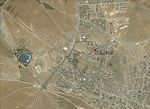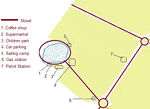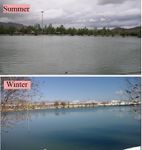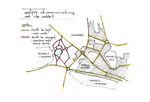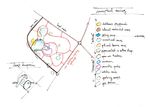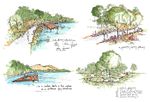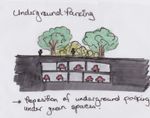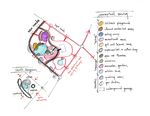Collaborative Design Planting Design Working Group 5: Difference between revisions
| Line 97: | Line 97: | ||
<gallery caption="Design Synthesis Drawings" widths="150px" heights="150px" perrow="4"> | <gallery caption="Design Synthesis Drawings" widths="150px" heights="150px" perrow="4"> | ||
Image:Ds1.jpg|Conceptual zoning | Image:Ds1.jpg|Conceptual zoning | ||
Image: | Image:Ds2.jpg|Concept of green structures | ||
Image:Pd3.jpg|Sketches of residential areas | Image:Pd3.jpg|Sketches of residential areas | ||
Image:Ds3.jpg|Underground garage concept | Image:Ds3.jpg|Underground garage concept | ||
Revision as of 23:24, 27 January 2014
---> back to group page working group 5
Collaborative case study of Gerdab (Gerdab-e Ben, the Ben lagoon) گرداب بِن
| Name | Gerdab-e Ben (The Ben lagoon) | |
| Location | Ben, Chaharmahal Va Bakhtiari | |
| Country | Iran | |
| Authors | Majid Amani Beni
Carolina Esteves Flores Leon Plahuta | |
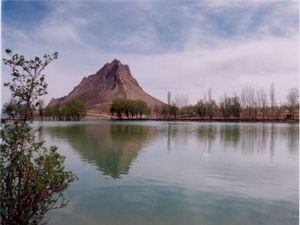
| ||
|
| ||
Landscape and/or urban context of your case
Gerdab is a beautiful lagoon that is located in the suburbs of the city Ben in Iran. It´s a very important tourist attraction that has a significant cultural and economical role for city of Ben. The lagoon measures 38,000 m2 and green spaces around (that were established in 1950) take up 100,000 m2 of the landscape´s surface. Gerdab is placed near two mountains which in combination with the mentioned trees make a beautiful scenery. In addition , the reflection of mountains on the lagoon itself makes an eye-catching sight that many tourists capture. Gerdab was also chosen as an outstanding tourist region of Iran in 2010.
There´s a strong interaction between nature and culture in Gerdab. In the first days of the Iranian new year (called Norooz celebration) which is simultaneous with the beginning of spring, many people go to have a recreation in Gerdab. In the enterance way of the lagoon, there is a statue of one of the Iranian poets and writers from the 18th century Mirza Habib and near it there is an inscription that mentiones his biography. It seems that in Gerdab, nature has a stronger force than culture. It seems that way because of the natural aestethics and the combination of natural elements (lagoon, trees and mountains). Near the lagoon there are some facilities like a supermarket, a coffee shop, a sailing camp, a children´s park, and a gas and petrol station. These help tourists to have a more comfotable stay. However, some human/cultural impact is neccessary for improving the touristic situation. For example the problem of heavy traffic, especially in summer, should be solved. Also with regard to the tourist population, there is a great potential to construct some cultural centers for introducing cultural values of the city.
It is believed that an ecological approach to planting design in Gerdab can help improve the quality of the landscape itself and create a sustainable landscape along the way. This idea can also decline the maintenance costs. There are a few problems regarding green spaces and landscapes of Gerdab. Discontinuous tree lines on the eastern side of the lagoon (A, 3rd representation) and the disconnection between green spaces of the lagoon and the city (B, 3rd representation) are the biggest ones. A planting design that would consider the ecological principles (for example using native plants) could possibly solve the mentioned problems and cause a more sustainable landscape.
Keywords: nature and culture, Ecological planting design, sustainable landscape.
- Visual representations of the contex
What are the objectives of your design?
The main goals of our collaborative planting design of Gerdab-e Ben are:
1. to improve the overall condition and planting scheme of the site´s green areas (to fix the existing problems regarding the discontinuous tree lines surrounding the lake and the disconnection between the city of Ben and the lake itself in addition to the new planting plan that needs to be a part of the future project and that could introduce different sorts of perrenials, ornamental plants and overall native planting design that could possibly fit best into the site)
2. to move the position of the road surrounding Gerdab (currently the lake looks like a traffic turning point which does not contribute to the “natural look & feel“ that this “Outstanding tourist region“ has and needs to emphasize even more in the future)
3. to analyze the existing facilities on the site and rethink their meaning, position, actual funtion and contribution to Gerdab: which one´s should be kept and which one´s the site can do without and are not really needed?
4. to introduce new residential areas (with their additional elements) on the site and ajust them to all kinds of user profiles within different age groups
5. to make this outstanding (and someone´s everyday) landscape more “natural“ and “people friendly“ and as pleasant as it can be thus more attractive, unique, interesting and representative for both Ben´s residents as well as Gerdab´ visitors
Analytical drawings
- Analytical Drawings
Projective drawings
- Projective Drawings
Design Synthesis
- Design Synthesis Drawings
Summary of the collaborative process
Please reflect on your collaborative design process. Which potentials have you encountered? What was most difficult? What does collaborative design mean for you? (approx 150 words).
Image Gallery
- Image Gallery
References
- [1] Aryanpour, Yahya., Az Saba Ta Nima (From Saba to Nima), Zavvar Publication, 1971, Vol 1, Tehran, Iran.
- [2] Hitchmough, J., & Woudstra, J. (1999). The ecology of exotic herbaceous perennials grown in managed, native grassy vegetation in urban landscapes. Landscape and Urban Planning, 45(2-3), 107-121.
- [3] Kingsbury, N (2004). Contemporary overview of naturalistic planting design. In the dynamic landscape, N. Dunnett & J. Hitchmough (Eds). (pp 58). London: Taylor & Francis.
- [4] Municipality of Ben, from: http://www.shahrdarieben.ir/fa/%DA%AF%D8%B1%D8%AF%D8%A7%D8%A8-%D8%A8%D9%86
- - Images: Personal photographs + Municipality of Ben (above link) + Google Maps: https://maps.google.com
About categories: You can add more categories with this tag: "", add your categories
